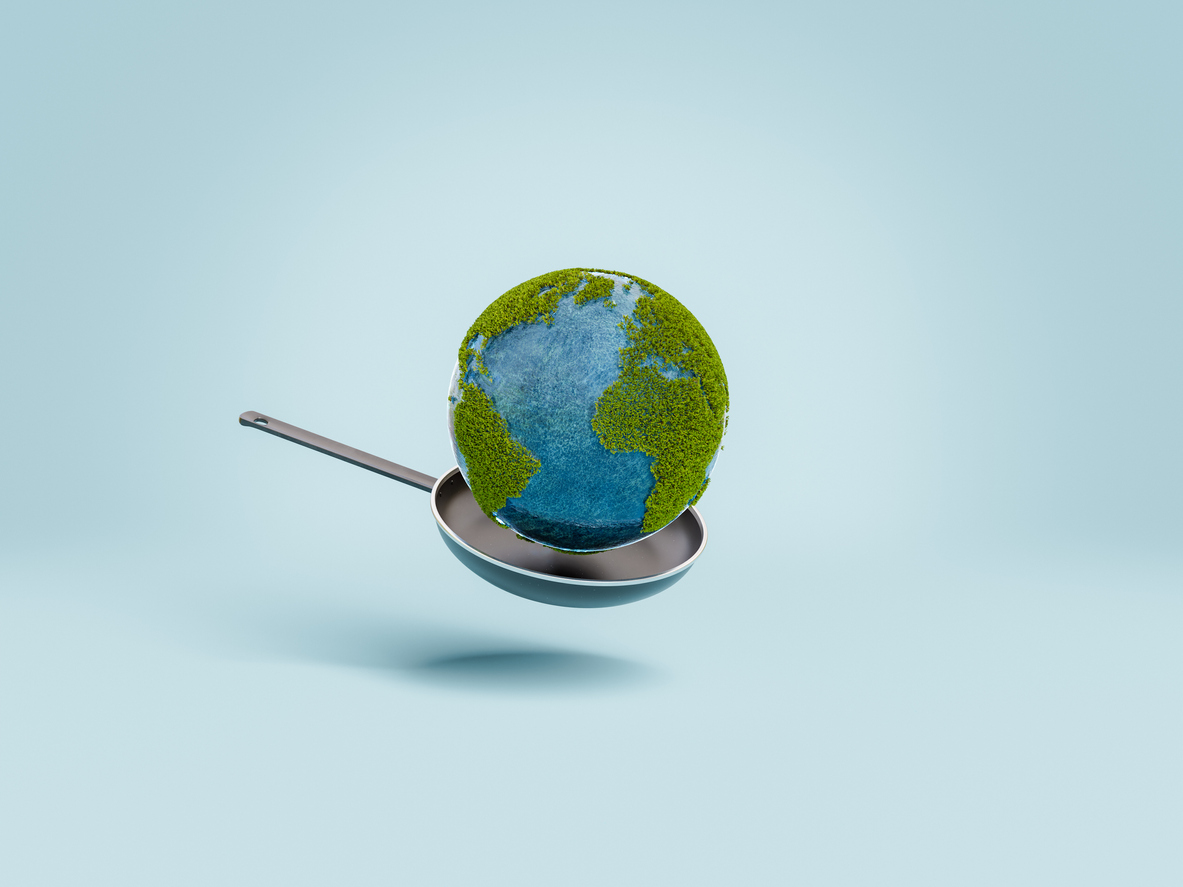History Shows U.S. Food System Leaves Behind People of Color
August 13, 2021
Summer Gonsalves knows the ins and outs of the U.S. food system, and she knows exactly who it leaves behind.
In an online workshop hosted by the Providence-based Southside Community Land Trust on Aug. 6, Gonsalves dug into the social and environmental factors that limit food access from seed and soil to the supermarket shelf. The U.S. food system, she said, has purposefully and unfailingly disconnected people of color from nutritious and affordable foods.
“Racism is an underlying factor in the history of agriculture and food access in the United States,” said Gonsalves, a member of the Narragansett Indian Tribe and co-leader with the Brown University Superfund Research Program. “It began with the taking of lands from Indigenous people primarily for the creation of farms. It continued with the enslavement of Indigenous and African peoples used as free laborers to work the farms.”
This marginalization exists today in the exploitation of immigrants from Asia and Latin America within the agricultural industry — an industry that widely underpays its workforce, exposes its employees to hazardous chemical pesticides and fertilizers, and puts workers in close contact with dangerous machinery, according to Gonsalves.
Patterns of racism in the food system don’t end with the agricultural industry. They have been built into the fabric of cities across the country, too, in the form of food deserts, or areas that lack access to supermarkets and large grocery stores.
The United States is home to more than 6,500 food deserts and these grocery gaps are pitted across Rhode Island, with the state’s largest centered in the city of Woonsocket, Gonsalves said.
Food deserts are often focused in areas with high poverty, high unemployment and limited transportation options. They are more likely to be found in areas with large minority populations. They can severely impact the buying habits and diets of food desert residents.
“When you have to shop based on accessibility, convenience and buy in bulk, you pay the price over time through your health,” Gonsalves said.
Food deserts often see high rates of diabetes, obesity and certain cancers and cardiovascular diseases, according to Gonsalves, who holds a master’s in public health from Brown University. In 2016, diet was a contributing factor in more than 500,000 deaths — or 19 percent of all U.S. deaths.
The inability to access affordable food overlaps with the inability to buy culturally appropriate food, Gonsalves said, which has been an intrinsic part of the modern food sovereignty movement. It is no secret that food is rooted in family tradition and cultural identity. But even as an estimated 40 percent of the U.S. population identifies as nonwhite, foods associated with nonwhite cultures are regularly crammed together into a single “ethnic aisle,” as pointed out in a recent New York Times article.
“For Native Americans, food is more than what we consume,” Gonsalves said. “It is about the process of growing, procuring, preparing and sharing foods that are imbued with values and cultural nuances.”
Some communities have fought to regain autonomy and grow healthy produce in small local farms and gardens. But urban tracts of vacant, arable land are rare, and community growing centers are typically relegated to less-than-ideal real estate.
Often, Gonsalves said, this means harvests come off lots with industrial pasts and soils rich not in nutrients, but in heavy metals with hefty health consequences if consumed.
So how can this change? According to Gonsalves, small steps to food justice can add up.
To help get healthy food out to the Narragansett Indian Tribe, Gonsalves created Of the Earth Harvest Boxes, filled with fresh, locally sourced traditional produce. It’s a step up from the “commodity boxes,” typically filled with unhealthy, processed and culturally inappropriate foods, and pushed out to tribes as federal food assistance starting in 1977.
Gonsalves has found the biggest difference comes in getting these boxes out to families with young kids, so they can build healthy dietary habits early on.
“When you can make an impression on a child, you have the chance to alter their long-term health outcome … and so education is huge,” Gonsalves said.
With the Brown University Superfund team, she’s also working on several public education projects. The group has compiled maps with data on gardens and public spaces, as well as hazardous industrial sites. Seed libraries and food resources maps, too, help feed and inform Rhode Islanders.
A digital archive is also in the works to share previously completed soil evaluations, so growers large and small know where their seeds can freely sprout and where raised beds might help.
“As with all movements,” Gonsalves said, “there cannot be adequate progress without barriers and speed bumps along the way.”




The Superfund overlaid with public gardens map (https://tollefsonj.shinyapps.io/superfund_map/) is really helpful. Is there an equivalent resource for Massachusetts and/or other states?
Thank you and Summer Gonsalves for the reminder that colonists not only stole the land, but also enslaved Indigenous and African peoples to labor on it – it’s a narrative usually missing from dominant food histories. On another note, I was inspired read about Gonsalves’ Of the Earth Harvest Boxes! Such a cool initiative.
The title of the article speaks to inequity in our food system effect on POC at the same time identifying Woonsocket as the largest food desert in RI. It’s a bigger story than race! The socio-economic factors affect all people not only POC.
The population density in Woonsocket is 421% higher than Rhode Island
In Woonsocket 80.56% of the population is White
In Woonsocket 8.49% of the population is Black
In Woonsocket 6.58% of the population is Asian